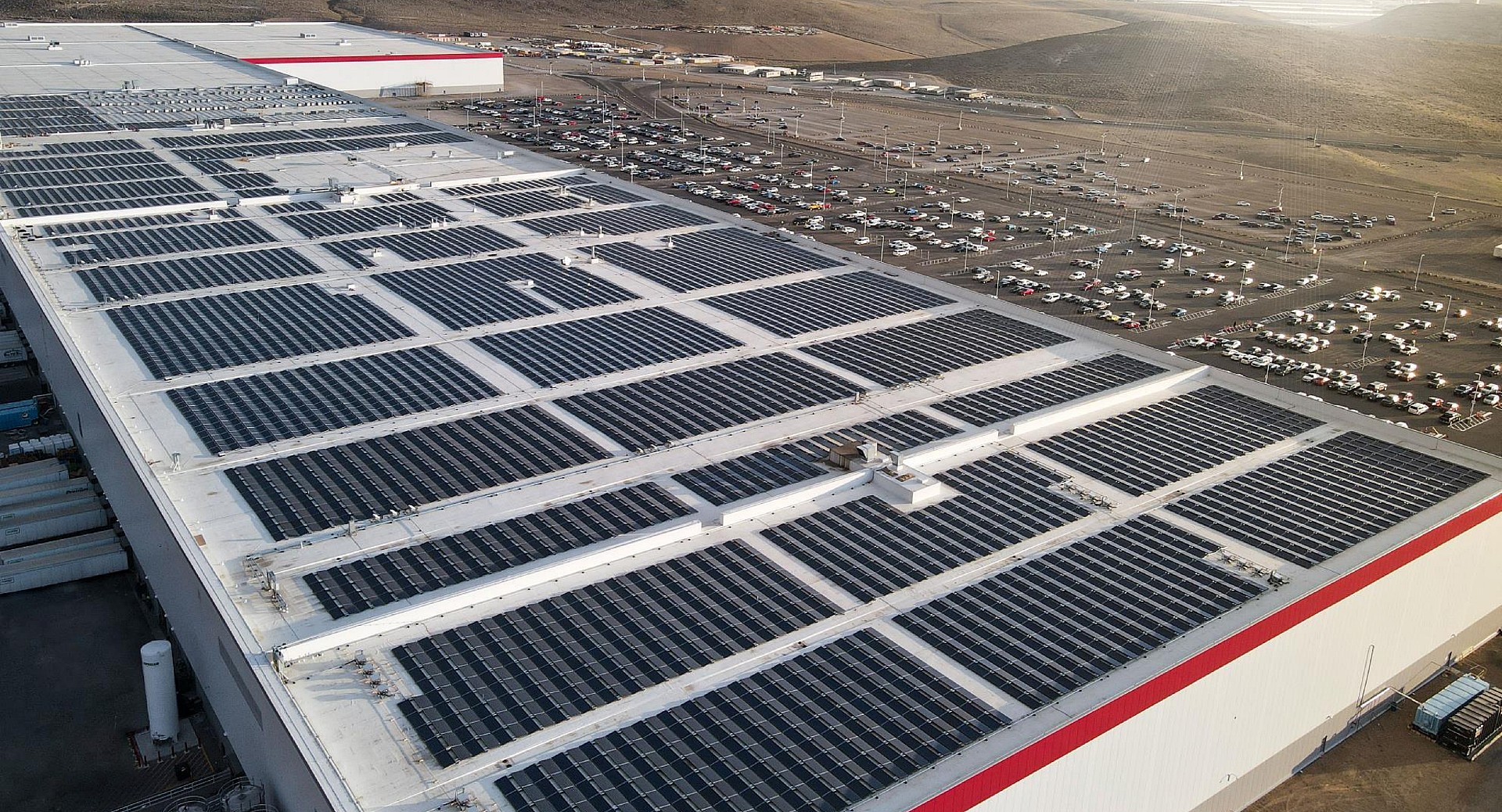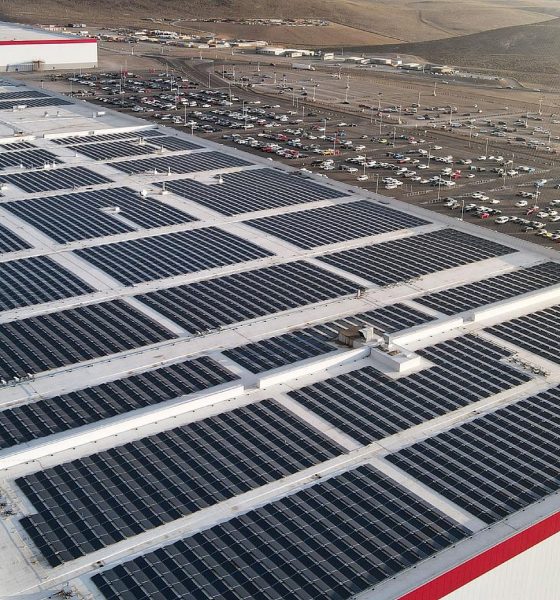

News
Tesla Giga Nevada exceeds 6.5K Powerwall per week, on target to make 442 Megapacks in Q3
A recent meeting with Tesla employees has revealed that Gigafactory Nevada is hitting its stride in the production of the company’s battery storage products like the Powerwall and Megapack. The Powerwall and Megapack are invaluable components of Tesla Energy, which Elon Musk believes could eventually be larger than the company’s electric vehicle business.
Gigafactory Nevada underwent leadership changes this year, with former Vice President of Gigafactory Operations Chris Lister leaving this summer. Taking his place is Hrushikesh “Hrushi” Sagar, who was promoted to oversee Giga Nevada. Sagar, who is also overseeing the Fremont Factory, will be reporting directly to CEO Elon Musk.
On Thursday, Sagar held a meeting with hundreds of Gigafactory employees. During the meeting, whose audio and documents were shared with CNBC, Sagar and other Tesla executives talked about management changes, factory milestones, and some ambitious goals for Tesla’s facilities.
Supporting an EV Ramp
Gigafactory Nevada does not produce vehicles, unlike Giga Shanghai, Giga Berlin, and Giga Texas. Instead, the facility is tasked with the production of 2170 batteries and powertrains that are used in the Model 3 sedan and the Model Y crossover. Gigafactory Nevada also produces key Tesla Energy products such as the Powerwall, a battery for residential customers, and the Megapack, a battery that’s designed for commercial use.
Sagar noted that the Fremont Factory has been on a roll, producing 134,000 vehicles in the second quarter of 2022. He added that Fremont is now able to produce 12,000 vehicles per week, and the factory is looking to increase this to 14,000 cars per week. Giga Nevada, on the other hand, produced 283,473 powertrains in Q2 2022, allowing the facility to “feed” the company’s vehicle production facilities.
Sagar clarified that while he does not plan to spend most of his time in Giga Nevada, he does plan to work closely with key people in the facility, such as Energy Leader Matt Reddick, and Site Leader Eric Montgomery, who noted during the meeting that August 2022 was Giga Nevada’s second-best month of production, coming second only to October 2021. Montgomery also noted that Giga Nevada has to achieve a steady output of 8,800 high voltage battery packs per week to support the company’s aggressive vehicle production plans.
Powerwalls and Megapacks
Powerwall production in Gigafactory Nevada is hitting its stride, with the facility exceeding 6,500 units of the residential battery system per week. Montgomery noted that Giga Nevada produced 37,600 Powerwalls in Q2 2022, and this is poised to increase by 22% in Q3 2022. Reddick, for his part, noted that Tesla is on target to produce 442 Megapack batteries for the third quarter. If successful, this would represent an 85% growth in Megapack production compared to the previous quarter.
During the meeting, questions were asked about the potential location of the company’s next Gigafactory. While Sagar noted that he is not at liberty to reveal confidential information about Tesla’s plans, he noted that the company has some candidates for the next Gigafactory’s location. “I have some idea on the candidates but I don’t think I’m at liberty right now to disclose those candidates because of the confidentiality around some of those things. There is an exciting future for North America and all around the Americas,” Sagar said.
Don’t hesitate to contact us with news tips. Just send a message to simon@teslarati.com to give us a heads up.

Elon Musk
Elon Musk’s X will start using a Tesla-like software update strategy
The initiative seems designed to accelerate updates to the social media platform, while maintaining maximum transparency.

Elon Musk’s social media platform X will adopt a Tesla-esque approach to software updates for its algorithm.
The initiative seems designed to accelerate updates to the social media platform, while maintaining maximum transparency.
X’s updates to its updates
As per Musk in a post on X, the social media company will be making a new algorithm to determine what organic and advertising posts are recommended to users. These updates would then be repeated every four weeks.
“We will make the new 𝕏 algorithm, including all code used to determine what organic and advertising posts are recommended to users, open source in 7 days. This will be repeated every 4 weeks, with comprehensive developer notes, to help you understand what changed,” Musk wrote in his post.
The initiative somewhat mirrors Tesla’s over-the-air update model, where vehicle software is regularly refined and pushed to users with detailed release notes. This should allow users to better understand the details of X’s every update and foster a healthy feedback loop for the social media platform.
xAI and X
X, formerly Twitter, has been acquired by Elon Musk’s artificial intelligence startup, xAI last year. Since then, xAI has seen a rapid rise in valuation. Following the company’s the company’s upsized $20 billion Series E funding round, estimates now suggest that xAI is worth tens about $230 to $235 billion. That’s several times larger than Tesla when Elon Musk received his controversial 2018 CEO Performance Award.
As per xAI, the Series E funding round attracted a diverse group of investors, including Valor Equity Partners, Stepstone Group, Fidelity Management & Research Company, Qatar Investment Authority, MGX, and Baron Capital Group, among others. Strategic partners NVIDIA and Cisco Investments also continued support for building the world’s largest GPU clusters.
News
Tesla FSD Supervised wins MotorTrend’s Best Driver Assistance Award
The decision marks a notable reversal for the publication from prior years, with judges citing major real-world improvements that pushed Tesla’s latest FSD software ahead of every competing ADAS system.

Tesla’s Full Self-Driving (Supervised) system has been named the best driver-assistance technology on the market, earning top honors at the 2026 MotorTrend Best Tech Awards.
The decision marks a notable reversal for the publication from prior years, with judges citing major real-world improvements that pushed Tesla’s latest FSD software ahead of every competing ADAS system. And it wasn’t even close.
MotorTrend reverses course
MotorTrend awarded Tesla FSD (Supervised) its 2026 Best Tech Driver Assistance title after extensive testing of the latest v14 software. The publication acknowledged that it had previously criticized earlier versions of FSD for erratic behavior and near-miss incidents, ultimately favoring rivals such as GM’s Super Cruise in earlier evaluations.
According to MotorTrend, the newest iteration of FSD resolved many of those shortcomings. Testers said v14 showed far smoother behavior in complex urban scenarios, including unprotected left turns, traffic circles, emergency vehicles, and dense city streets. While the system still requires constant driver supervision, judges concluded that no other advanced driver-assistance system currently matches its breadth of capability.
Unlike rival systems that rely on combinations of cameras, radar, lidar, and mapped highways, Tesla’s FSD operates using a camera-only approach and is capable of driving on city streets, rural roads, and freeways. MotorTrend stated that pure utility, the ability to handle nearly all road types, ultimately separated FSD from competitors like Ford BlueCruise, GM Super Cruise, and BMW’s Highway Assistant.
High cost and high capability
MotorTrend also addressed FSD’s pricing, which remains significantly higher than rival systems. Tesla currently charges $8,000 for a one-time purchase or $99 per month for a subscription, compared with far lower upfront and subscription costs from other automakers. The publication noted that the premium is justified given FSD’s unmatched scope and continuous software evolution.
Safety remained a central focus of the evaluation. While testers reported collision-free operation over thousands of miles, they noted ongoing concerns around FSD’s configurable driving modes, including options that allow aggressive driving and speeds beyond posted limits. MotorTrend emphasized that, like all Level 2 systems, FSD still depends on a fully attentive human driver at all times.
Despite those caveats, the publication concluded that Tesla’s rapid software progress fundamentally reshaped the competitive landscape. For drivers seeking the most capable hands-on driver-assistance system available today, MotorTrend concluded Tesla FSD (Supervised) now stands alone at the top.
News
Elon Musk’s Grokipedia surges to 5.6M articles, almost 79% of English Wikipedia
The explosive growth marks a major milestone for the AI-powered online encyclopedia, which was launched by Elon Musk’s xAI just months ago.

Elon Musk’s Grokipedia has grown to an impressive 5,615,201 articles as of today, closing in on 79% of the English Wikipedia’s current total of 7,119,376 articles.
The explosive growth marks a major milestone for the AI-powered online encyclopedia, which was launched by Elon Musk’s xAI just months ago. Needless to say, it would only be a matter of time before Grokipedia exceeds English Wikipedia in sheer volume.
Grokipedia’s rapid growth
xAI’s vision for Grokipedia emphasizes neutrality, while Grok’s reasoning capabilities allow for fast drafting and fact-checking. When Elon Musk announced the initiative in late September 2025, he noted that Grokipedia would be an improvement to Wikipedia because it would be designed to avoid bias.
At the time, Musk noted that Grokipedia “is a necessary step towards the xAI goal of understanding the Universe.”
Grokipedia was launched in late October, and while xAI was careful to list it only as Version 0.1 at the time, the online encyclopedia immediately earned praise. Wikipedia co-founder Larry Sanger highlighted the project’s innovative approach, noting how it leverages AI to fill knowledge gaps and enable rapid updates. Netizens also observed how Grokipedia tends to present articles in a more objective manner compared to Wikipedia, which is edited by humans.
Elon Musk’s ambitious plans
With 5,615,201 total articles, Grokipedia has now grown to almost 79% of English Wikipedia’s article base. This is incredibly quick, though Grokipedia remains text-only for now. xAI, for its part, has now updated the online encyclopedia’s iteration to v0.2.
Elon Musk has shared bold ideas for Grokipedia, including sending a record of the entire knowledge base to space as part of xAI’s mission to preserve and expand human understanding. At some point, Musk stated that Grokipedia will be renamed to Encyclopedia Galactica, and it will be sent to the cosmos.
“When Grokipedia is good enough (long way to go), we will change the name to Encyclopedia Galactica. It will be an open source distillation of all knowledge, including audio, images and video. Join xAI to help build the sci-fi version of the Library of Alexandria!” Musk wrote, adding in a later post that “Copies will be etched in stone and sent to the Moon, Mars and beyond. This time, it will not be lost.”








